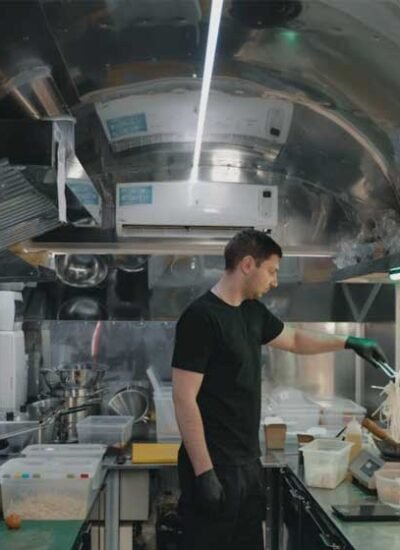Have you ever walked into your kitchen ready for a busy day, only to realize you’re out of something important? Many food-based business owners face this issue. Missing supplies slow down prep, impact customer service, and create stress that could have been avoided. Whether you run a café, food truck, catering business, or a small restaurant, having the right supplies available every day is crucial to your operations.
In this blog, we will share how to build a helpful supply checklist for your food-based business. Each section will guide you through an important area, from prep tools and packaging to cleaning supplies and inventory tips.
Start with Food Preparation Basics
Food preparation supplies form the foundation of your business. These are the tools your staff uses every day to prepare meals quickly and safely. Think about what you need to measure, cut, mix, or store food before it reaches the customer. Items like cutting boards, measuring cups, mixing bowls, food scales, and containers are must-haves in most kitchens. Choose supplies that are sturdy, easy to clean, and safe for food contact.
Depending on your menu, your list might also include timers, portion scoops, squeeze bottles, or food storage bins. Don’t forget labels and markers for food safety and tracking freshness. If you prepare large batches in advance, keep a good stock of plastic wrap, foil, and food pans.
Cover Packaging and Takeout Supplies
If your food business offers takeout, delivery, or grab-and-go meals, your checklist must include the right packaging supplies. Think about all the items needed to get food from your kitchen to your customers safely. These include disposable containers, takeout boxes, foil wrappers, paper bags, and portion cups. Make sure to use sturdy, leak-proof packaging for hot foods and vented containers for fried or crispy items. Don’t forget utensils, straws, and napkins to complete the experience.
Foodware Express offers a wide range of packaging options tailored to food businesses, making it easier to find everything in one place. Their collection includes breakroom basics, food containers, and disposable goods that help keep operations running smoothly. Relying on a trusted supplier saves time and reduces the risk of missing key items during busy hours. Keep packaging products organized by type and quantity so you can restock before running low. This keeps service quick and professional while avoiding delays or last-minute supply runs.
Don’t Overlook Cleaning and Janitorial Supplies
Cleanliness is critical in the food industry. A clean workspace keeps your team healthy, avoids contamination, and maintains food safety. Your supply checklist must include cleaning cloths, paper towels, gloves, aprons, disinfectants, and trash bags. Also, stock basic cleaning tools like brooms, mops, buckets, and sprays that work for both food-contact and non-food surfaces.
Consider your kitchen layout and workflow when planning cleaning supplies. If you have multiple food prep stations, make sure each one has access to sanitizers and hand soap. Keep disposable gloves and hairnets near prep areas. Refill stations for cleaning products can help you manage restocking more easily. These supplies may seem minor, but they support a safe and organized environment. Add them to your checklist and restock them before they run out.
Add Breakroom and Staff Essentials
While the focus is often on what the customer sees, your staff also needs a well-supplied break area to stay comfortable and productive. Include napkins, paper towels, disposable plates, cups, and cutlery. Stock up on coffee filters, stirrers, and other small items that support daily routines. If your team eats on-site, provide storage containers or plastic wrap for leftovers.
A good staff area also supports hygiene. Keep hand sanitizers, tissues, soap, and cleaning wipes in easy-to-reach places. Add extra gloves, aprons, and hairnets to this section of your checklist so your team always has backups during busy hours. Staff comfort contributes to a smoother work environment. When people have what they need, they work better and feel more supported.
Make Room for Seasonal or Special Event Supplies
Your supply needs may change depending on the season or upcoming holidays. In the summer, you may need more cold drink cups or ice packs for deliveries. Around the holidays, festive packaging and themed napkins may become important. Make a section in your checklist just for seasonal supplies that rotate throughout the year.
It’s also smart to think about special orders or catering events. If your business offers party trays or large meal bundles, include foil pans, larger containers, and disposable serving utensils. Keep a few extras in stock even when there’s no event scheduled. This way, you’re not scrambling when a last-minute order comes in. Planning ahead helps you serve your customers better and stay ahead of the rush.
Track Inventory and Reorder Points
Once your checklist is complete, make it a habit to track what’s in stock and what needs to be ordered. Create a system that shows which items you check daily, weekly, or monthly. Use a simple spreadsheet or a printed list where you mark what’s running low. This helps prevent supply gaps and overstocking.
Every item on your list should have a reorder point—a level at which you place a new order before running out. For example, if you go through 100 food containers a week, set your reorder point at 150 so you always have extras on hand. This also helps with budgeting, since you’ll only order what you truly need. Staying organized saves both money and stress.
In conclusion, your supply checklist is more than a list—it’s a tool that supports your entire business. From food prep and packaging to janitorial supplies and inventory tracking, each section helps create a well-run operation. A clear, organized checklist saves time, prevents waste, and makes daily routines easier for your team. Start with the basics, expand based on your needs, and update regularly as your business evolves. With the right tools and planning, your food business can run smoothly every day—and be ready for whatever comes next.





Leave a Reply